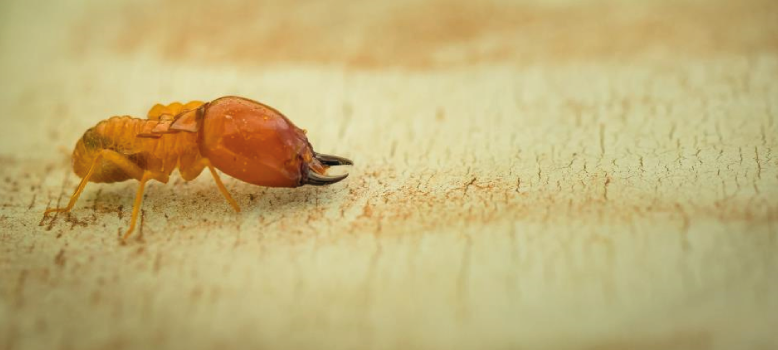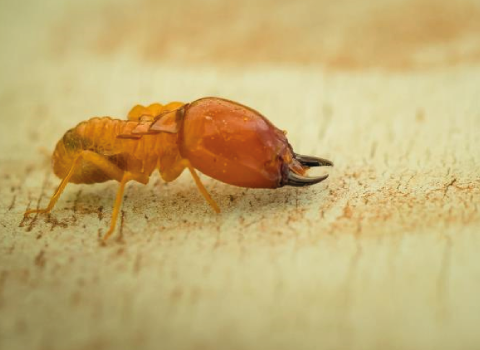Termites, sometimes known as white ants, are a group of eusocial insects usually classified at the taxonomic rank of order, Isoptera.
White ant is a commonly used name for a termite. As with many common names for pests, the term has come about because of the way that termites look.
Termites feed on dead plant material, generally in the form of wood, leaf litter or soil, and about 10% of the 4,000 odd species (about 2,600 taxonomically known) are economically important as pests that can cause serious structural damage to buildings, crops or plantation forests.
Termites are significant detrivores, particularly in the subtropical and tropical regions, and their recycling of wood and other plant matter is of considerable ecological importance.
As social insects, termites live in colonies that, at maturity, number from several hundred to several million individuals.
They are a prime example of decentralised, self-organised systems using swarm intelligence and use this cooperation to exploit food sources and environments that could not be available to any single insect acting alone.
A typical colony contains nymphs (semi-mature young), workers, soldiers, and reproductive individuals of both sexes, sometimes containing several egg-laying queens.
Because of their wood-eating habits, termites sometimes do great damage to buildings and other wooden structures.
Their habit of remaining concealed often results in their presence being undetected until the timbers are severely damaged and exhibit surface changes.
Once termites have entered a building they do not limit themselves just to wood, also damaging paper, cloth, carpets, and other cellulosic materials.
A termite infestation and damage can be devastating to your home or property. Termites are often called the “silent destroyer” because they may be secretly hiding and thriving in your home or yard without any immediate signs of damage. All termites consume cellulose-based plant materials. Unfortunately, all homes, regardless of their construction type, can provide cellulose food for termite infestation.
· Size: Termites range from 1/4 to 1/2 an inch in length. The queens and kings are larger, capable of reaching over one inch long.
· Color: The workers are typically soft-bodied and pale-colored.
· Wings: Flying termites, also called reproductives, have two pairs of prominent wings
Some indications you may have a termite infestation:
· A temporary swarm of winged insects in your home or from the soil around your home.
· Any cracked or bubbling paint or frass (termite droppings).
· Wood that sounds hollow when tapped.
· Mud tubes on exterior walls, wooden beams or in crawl spaces.
· Discarded wings from swarmers.
Termite Habitat
Where do they live?
Commonly, termites live in wooden structures, decayed trees, fallen timber, and soil. Habitats vary among species as some termites require different amounts of moisture. The pests are found in greater numbers in tropical regions where living conditions for termites is optimal.
Subterranean termites are the most abundant variety and can be found throughout the United States. Both dampwood and drywood species are generally more localized in the Southern states.
Subterranean termite homes are usually formed in soil. Within these mounds, termites build elaborate tunnel systems and mud tunnels through which they access above-ground food sources.Drywood termites live within the wood they consume and oftentimes infest walls and furniture.
When a colony has matured, winged, swarming termites can be seen around windows and doors. Winged termites are highly attracted to sources of light and are most active in springtime. After mating, these termites locate a new breeding site and create another colony, spreading infestations throughout multiple locations in the case of drywood termites.
Reproduction
In the summer months, reproductive flying termites leave their mature colonies to mate and pair off. After this, the couples lose their wings, become queens and kings, and create new colonies. Immature termites develop to fill one of three roles: workers, soldiers, or reproductives. Some species of termite queens lay millions of eggs each year.




